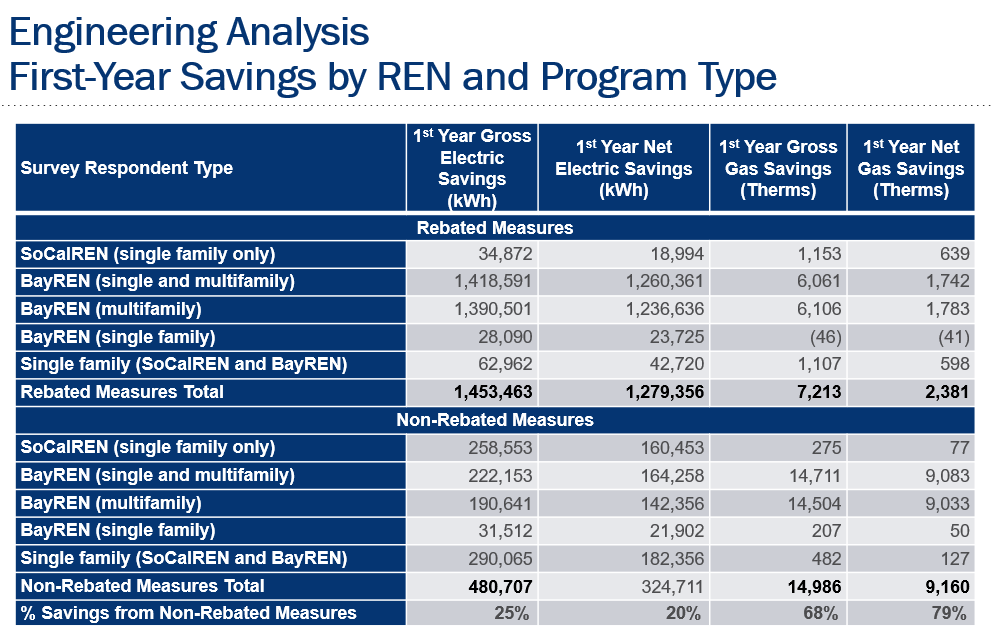Challenge: State-funded energy efficiency programs in California are divided into two types: resource programs that lead directly to quantifiable energy and demand savings, and non-resource programs that may lead to savings, but are primarily designed for other purposes including equity, market support, workforce education and training, and market transformation. The CPUC tasked Tierra with evaluating the non-resource programs administered by local government partnerships (LGPs) and regional energy networks (RENs) that are organized at the local/regional government level to determine their contribution to statewide energy savings goals.
Approach: The evaluation team first divided LGPs and RENs into separate studies since their administration, delivery, and target audiences are distinct. However, both
Project Highlights:
- Evaluated non-resource activities to determine contributions to statewide energy savings target
- Developed a methodology to assess influence and attribution to energy savings derived from non-resource programs
- Contributed research leading to CPUC decision to recategorize non-resource programs and develop new metrics for contributions beyond energy savings
evaluations followed a similar approach. For LGPs the tram selected LGPs spanning California’s four investor-owned utilities (IOUs) and emphasized municipal customers. For RENs the team focused on single and multifamily customers who participated in non-resource activities at one of the three CPUC-approved RENs. After data requests, the team conducted channeling analyses to identify customers who interacted with non-resource activities and subsequently went on to participate in resource programs that resulted in energy savings. The team conducted in-depth interviews with LGP, REN, and staff, and fielded participant web surveys. The surveys asked respondents to identify energy efficient equipment upgrades and behavioral changes and to rate the influence of non-resource activities on those actions relative to other concomitant influencing factors. The team then performed engineering analyses to quantify first year gross and net energy savings to determine the amounts attributable to the non-resource activities conducted by the respective LGPs and RENs.
Outcome: The team found that LGP and REN non-resource activities each had overall average influence rating of 6 out 10 compared to the combined effects of any other non-LGP or REN related influencing factors. This attribution and the subsequent engineering analysis revealed hundreds of MWh of claimed and unclaimed first year net electric savings and thousands of therms of claimed and unclaimed gas savings that could and should have been attributed to LGP and REN non-resource activities. The team also identified deficiencies in LGP and REN tracking data for non-resource activities that made rendering even more attributions impossible. The team’s findings and associated recommendations for better tracking contributed to a 2021 CPUC decision to reapportion the State’s portfolio of DSM programs by splitting non-resource programs into equity and market support categories, establishing new tracking metrics for programs assigned to the equity and market support categories, and mandating a new total system benefit calculation for resource programs.
A PDF version of this project description is available for download here.



Grid-Interactive Heat Pump Water Heating Pilot Program
Challenge: Sonoma Clean Power (SCP), a community choice aggregator (CCA) in California, wanted to develop a grid-interactive heat pump water heater pilot program for residential customers. Research was needed to define what products were available within SCP’s service...

Demand Side Management (DSM) Portfolio Optimization Study
Challenge: Seattle City Light’s (SCL) successful portfolio of conservation initiatives continue to operate in an environment of evolving economics, environmental policy, technological enhancements, health and safety mandates, and social equity goals. Accordingly, an...

Distributed Energy Resource Executive Workshops
Challenge: As a follow-up to Tierra’s work with a Canadian utility in 2019 to develop a comprehensive integrated distributed energy resource (DERs) strategy and implementation roadmap, Tierra re-engaged with the same utility in 2021 when they asked for assistance...
